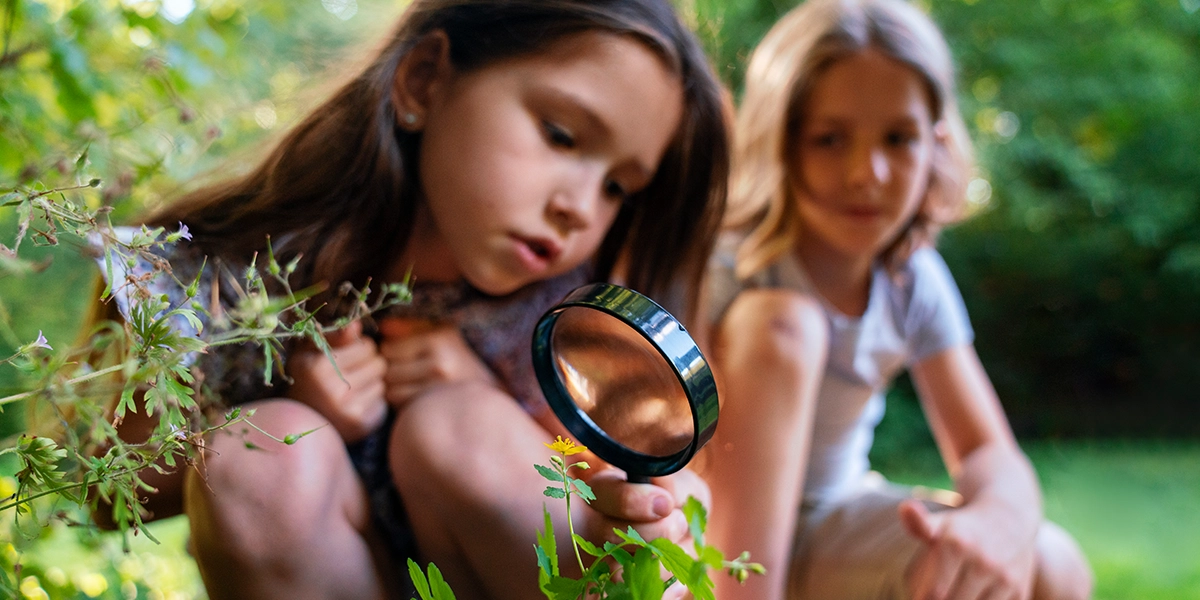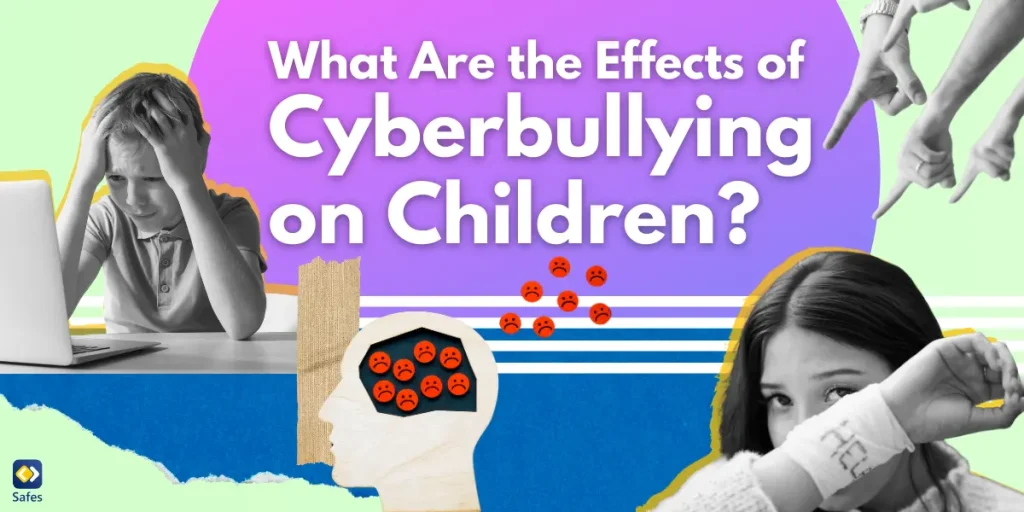Naturalist intelligence is one of the multiple types of intelligence a person can develop, such as spatial and musical intelligence. A naturalist learner has the ability to recognize, categorize, and understand the various elements of the natural world. This intelligence is often associated with a deep appreciation of nature, as well as the capacity to observe, analyze, and draw meaningful conclusions from the environment. Naturalists understand the interconnectivity of the natural world and have a heightened sense of awareness when it comes to noticing the subtle details of the environment. In this blog, we dive into the relevance, benefits, implementing strategies, and examples of naturalist intelligence.
Download and Start Your Free Trial of the Safes Parental Control App
What Is Naturalist Intelligence?
Naturalist intelligence is defined as the ability to understand and appreciate the natural world. It involves the ability to observe, identify, differentiate, and classify different elements of nature and to make connections between them. Naturalist intelligence also involves an aesthetic appreciation of nature as well as an understanding of the interrelationships between living things.
Characteristics of Individuals with High Naturalist Intelligence
Individuals who possess a high level of naturalist intelligence tend to be great observers. They’re able to identify and classify different elements in the natural world and make connections between them. They also have an appreciation for the aesthetic beauty of nature and are able to recognize patterns in the environment. Furthermore, they have a deep understanding of the interrelationships between living things.
The Relevance of Naturalist Intelligence to Education
Naturalist intelligence can be an important part of education. By teaching students the basics of naturalist intelligence, we can help them become more aware of their natural surroundings and foster a greater understanding of the environment. It can help students to better understand the natural world and to appreciate the beauty of nature. Furthermore, it can provide students with a deeper understanding of the interrelationships between living things.
Benefits of Integrating Naturalist Intelligence into Education
In today’s world, naturalist intelligence is becoming an increasingly important factor in education. By understanding the importance of this type of intelligence and how it can be integrated into education, we can unlock a range of benefits that can help learners of all ages. Here are five key benefits of integrating naturalist intelligence into education that you should know.
Enhanced Engagement and Motivation
Integrating naturalist intelligence into education can help to enhance engagement and motivation among learners. This is because it encourages exploration, curiosity and a deeper connection with the natural world. By tapping into naturalist intelligence, learners are more likely to stay focused and engaged with their studies.
Improved Academic Performance
Naturalist intelligence can also help to improve academic performance. Learners who use their naturalist intelligence to explore the world around them are more likely to develop a deeper understanding of their studies, which can have a positive impact on their academic performance.
Development of Critical Thinking and Problem-Solving Skills
Engaging with naturalist intelligence can help learners to develop their critical thinking and problem-solving skills. By exploring different aspects of the natural world, learners can gain an understanding of how to approach and solve problems.
Nurturing Empathy and Environmental Consciousness
Exploring the natural world can also help to nurture empathy and environmental consciousness. By engaging in activities that involve naturalist intelligence, learners can gain a better understanding of the importance of preserving and protecting the natural world.
Real-World Application and Relevance
Finally, integrating naturalist intelligence into education can also help to provide real-world application and relevance to learners. By giving learners the opportunity to explore their natural environment, they can gain a better understanding of how their studies can be applied to their everyday lives.
Decreased Screen Time
By spending more time on naturalist intelligence, children’s screen time will decrease as well. With the current availability of social media and the internet, children can get exposed to the negative effects of the internet more frequently.
Another way to decrease your child’s screen time is by using a parental control app. One of the best parental control apps is Safes. This app offers an activity report of your child’s online behavior; you can also set a time limit for apps or block their phone completely and instantly stop them from using it. Safes is available for Android, and iOS, but also for macOS and Windows. Try Safes today with our free trial offer to see how it can help manage your child’s screen time effectively.
Strategies for Integrating Naturalist Intelligence into Education
Let’s look at some strategies to incorporate naturalist intelligence into education:
Outdoor Exploration and Nature-Based Activities
Outdoor exploration and nature-based activities are a great way to foster naturalist intelligence. Taking students out of the classroom and into the outdoors helps them make observations, form meaningful connections, and engage in critical thinking. This can be done through field trips, hikes, and nature walks.

Use of Technology and Multimedia Resources
Technology is an excellent resource for exploring the natural world. Using multimedia resources such as videos, podcasts, and apps can help educate students about the environment and introduce them to different aspects of naturalist intelligence.
Integration into Existing Curriculum
Incorporating naturalist intelligence into existing curricula can be a great way to engage students and help them gain a deeper understanding of the natural world. This can be done by introducing concepts related to naturalist intelligence into existing lessons and activities.
Collaboration with Experts and Community Organizations
Collaborating with experts and community organizations can be a great way to gain access to resources related to naturalist intelligence and provide students with a greater understanding of the natural world.
Teacher Training and Professional Development
Professional development for teachers is essential to ensure that they are prepared to effectively teach naturalist intelligence in the classroom. Teacher training programs can help teachers gain the necessary skills and knowledge to teach students about the natural world.
By taking advantage of the strategies outlined above, educators can provide students with the opportunity to explore the natural world and gain a greater understanding of the environment.
Examples of Naturalist Intelligence Integration in Education
In this part we’ll take a look at some inspiring examples of naturalist intelligence integration in education, as well as practical activities and projects for all grade levels and subject areas.
From elementary school lessons on plant and animal life to college courses on environmental science, naturalist intelligence can be used to engage students in a variety of educational contexts. Here are a few naturalist intelligence examples to integrate in a child’s education:
- Elementary school students can learn about the importance of conservation through field trips to a local park or nature preserve.
- Middle school students can use naturalist intelligence to explore their local ecosystems and identify different species of plants and animals.
- High school students can learn about the effects of climate change by examining how different species of plants and animals are adapting to their changing habitats.
- College students can use naturalist intelligence to develop solutions to environmental problems, such as conservation methods and sustainable development strategies.

Case Study of Successful Naturalist Intelligence Integration in Different Educational Contexts
At my own elementary school in the Netherlands, teachers incorporated naturalist intelligence into their lessons by taking students on field trips to observe the local flora and fauna. By exploring the natural environment, students gained a greater appreciation for their local ecosystem and learned about the importance of conservation.
Later at my middle school, naturalist intelligence was used to teach students about the importance of biodiversity. Through hands-on activities, such as collecting and analyzing soil samples and creating wildlife habitats, students gained a greater understanding of the intricate relationships between different species of plants and animals.
During high school, our teachers used naturalist intelligence to teach students about the effects of climate change. Through field trips to observe the effects of global warming on local ecosystems, students developed an understanding of how climate change is impacting the environment and how their actions can help mitigate the problem.
Practical Examples of Activities and Projects for Different Grade Levels and Subject Areas
From elementary schools to universities, educators are finding creative and engaging ways to bring naturalist intelligence into the classroom. To help bring naturalist intelligence into the classroom, here are some practical examples of activities and projects for different grade levels and subject areas:
- Elementary school students can create a wildlife habitat in their backyard and observe the different species of plants and animals that inhabit it.
- Middle school students can explore their local ecosystems and identify different species of plants and animals.
- High school students can research the effects of climate change on local ecosystems and design solutions for mitigating the problem.
- College students can use naturalist intelligence to explore the relationship between human activities and the environment and develop solutions for sustainability.
Naturalist Intelligence: A Recap of the Importance and Benefits of Integrating Naturalist Intelligence into Education
Integrating naturalist intelligence into education can have numerous benefits. It can help students develop a greater understanding of the environment and how to interact with it in an ethical and sustainable manner. Additionally, naturalist intelligence can also lead to higher levels of creativity, problem-solving skills, and critical thinking. Finally, by engaging with nature, students are more likely to develop a deep appreciation and respect for the natural world.
Final Thoughts on the Teachers’ and Schools’ Role in Developing Naturalist Intelligence in Students
Teachers and schools play a vital role in developing naturalist intelligence in students. By giving students opportunities to engage with nature, teachers can help foster an appreciation of the natural world and a better understanding of how to interact with it. They can also encourage students to explore the outdoors, observe different species and habitats, and learn more about the natural environment. Therefore, teachers should be aware of the importance of naturalist intelligence and work to integrate it into the curriculum.
Prioritize Naturalist Intelligence in Teaching Practices
The importance and benefits of integrating naturalist intelligence into education cannot be understated. As such, it is essential for educators to prioritize naturalist intelligence in their teaching practices. This can be achieved by providing students with opportunities to engage with nature, encouraging them to explore the outdoors, and integrating naturalist intelligence into the curriculum. By doing so, educators can help foster a greater appreciation for the natural world and equip students with the knowledge and skills needed to become responsible stewards of nature.
Your Child’s Online Safety Starts Here
Every parent today needs a solution to manage screen time and keep their child safe online.
Without the right tools, digital risks and excessive screen time can impact children's well-being. Safes helps parents set healthy boundaries, monitor activity, and protect kids from online dangers—all with an easy-to-use app.
Take control of your child’s digital world. Learn more about Safes or download the app to start your free trial today!




